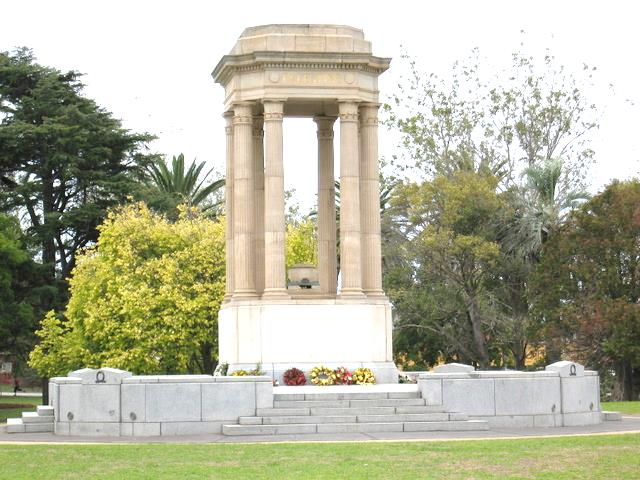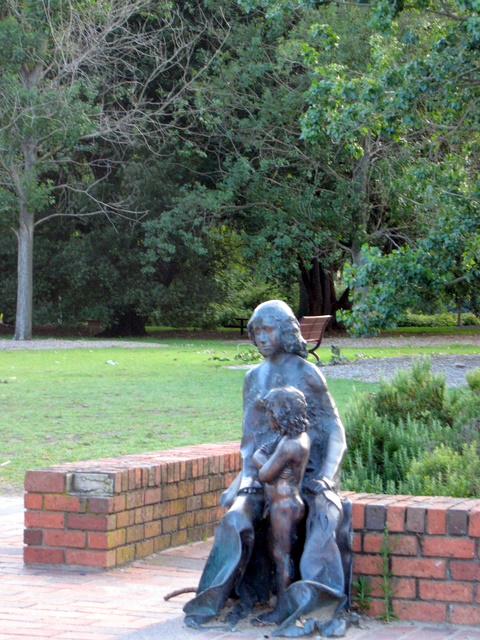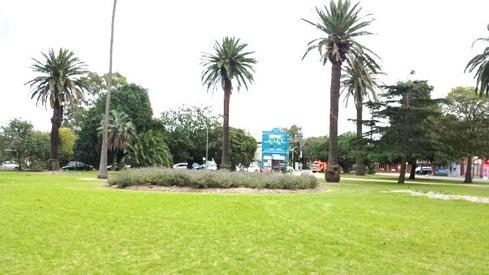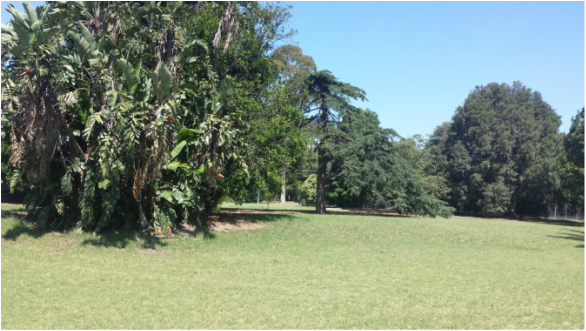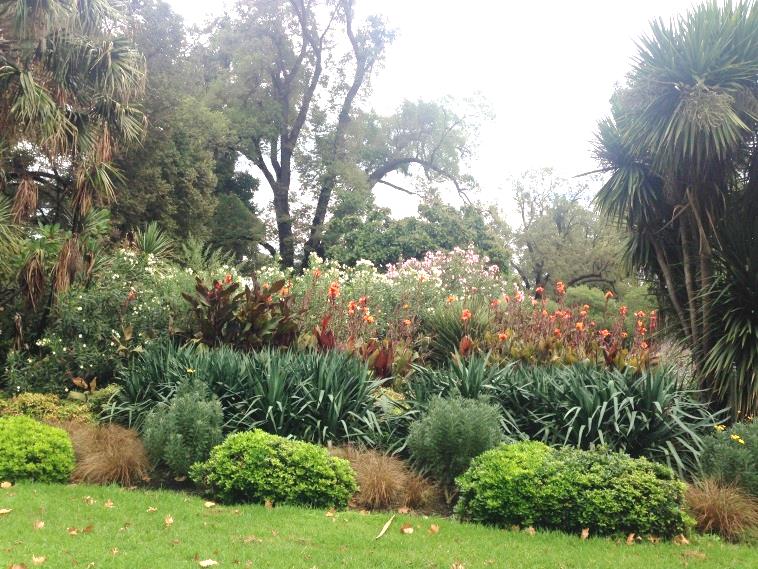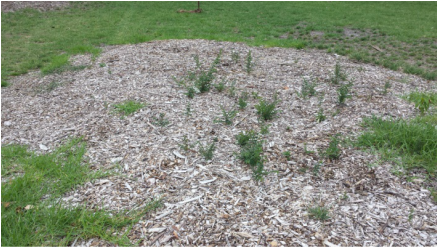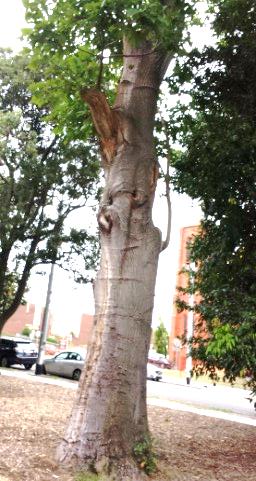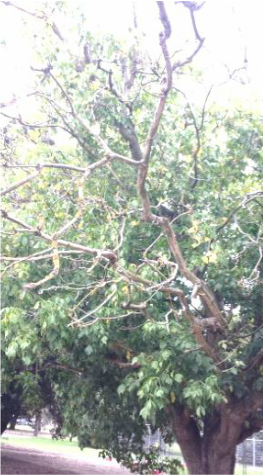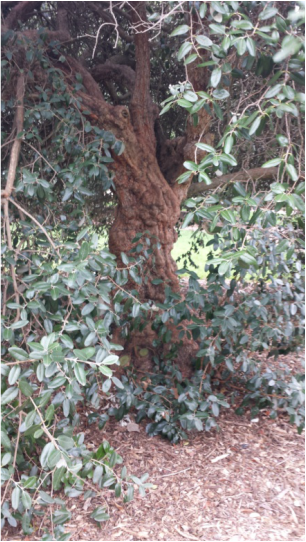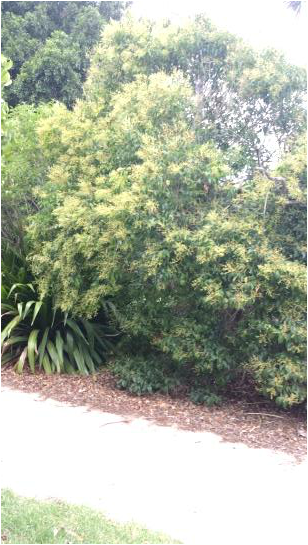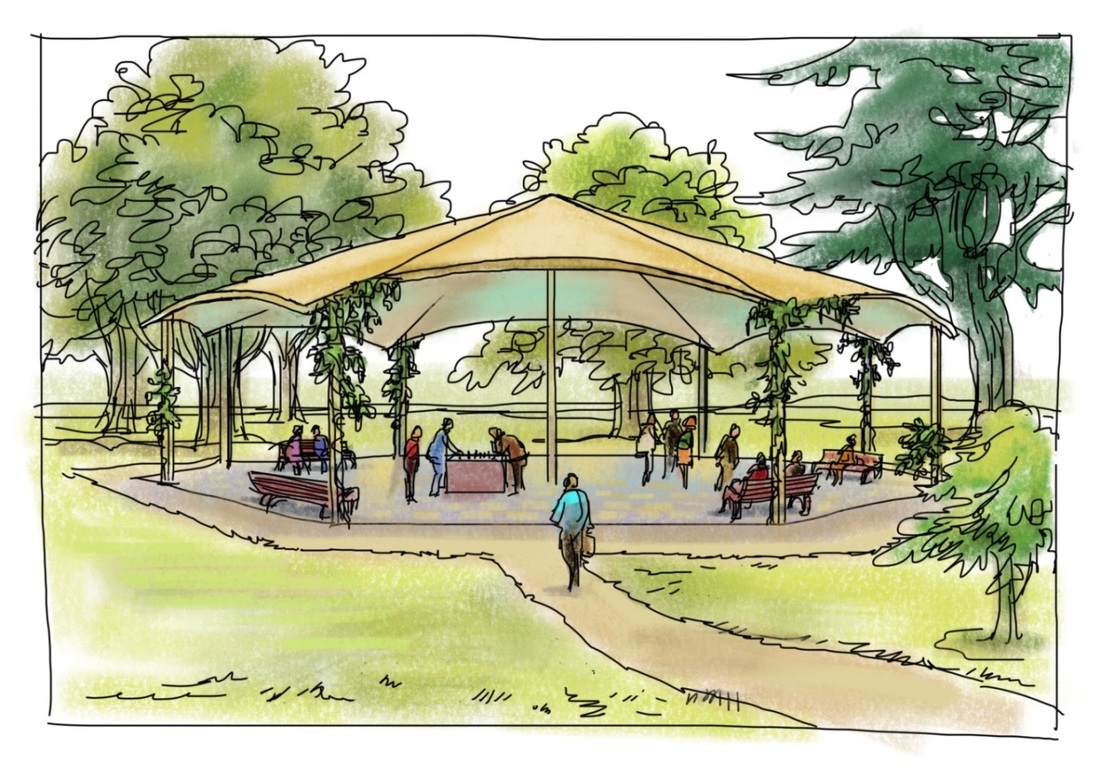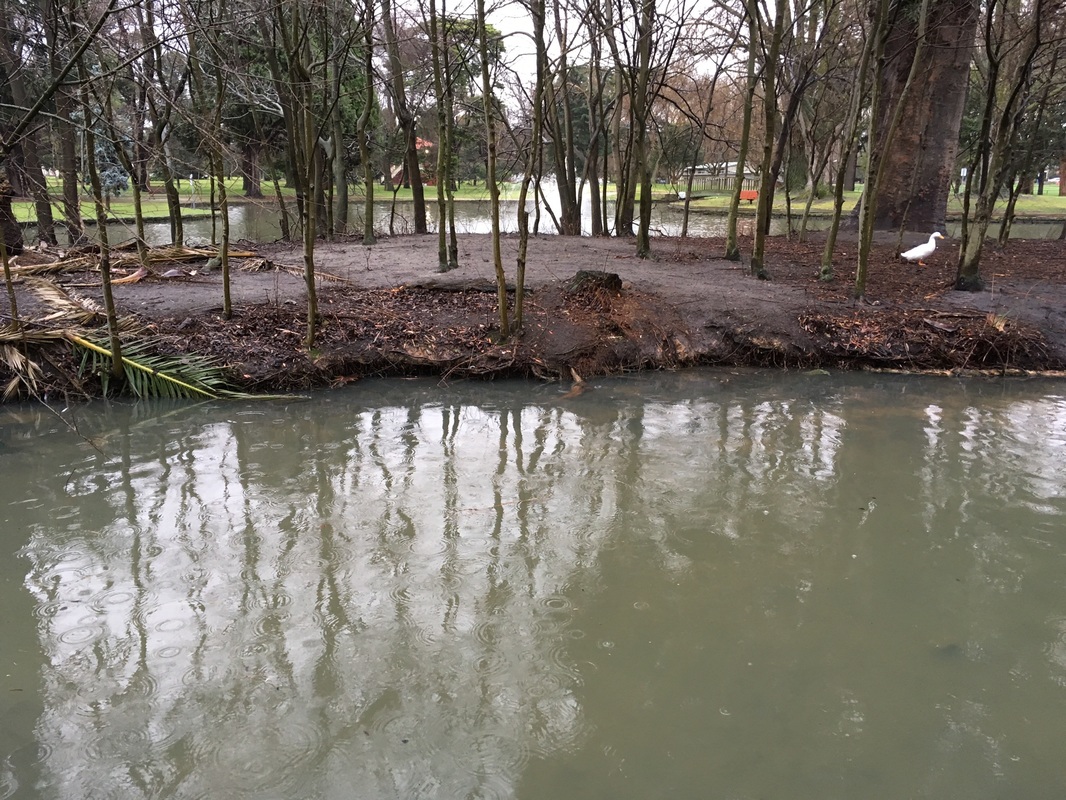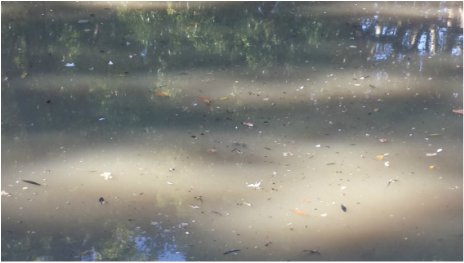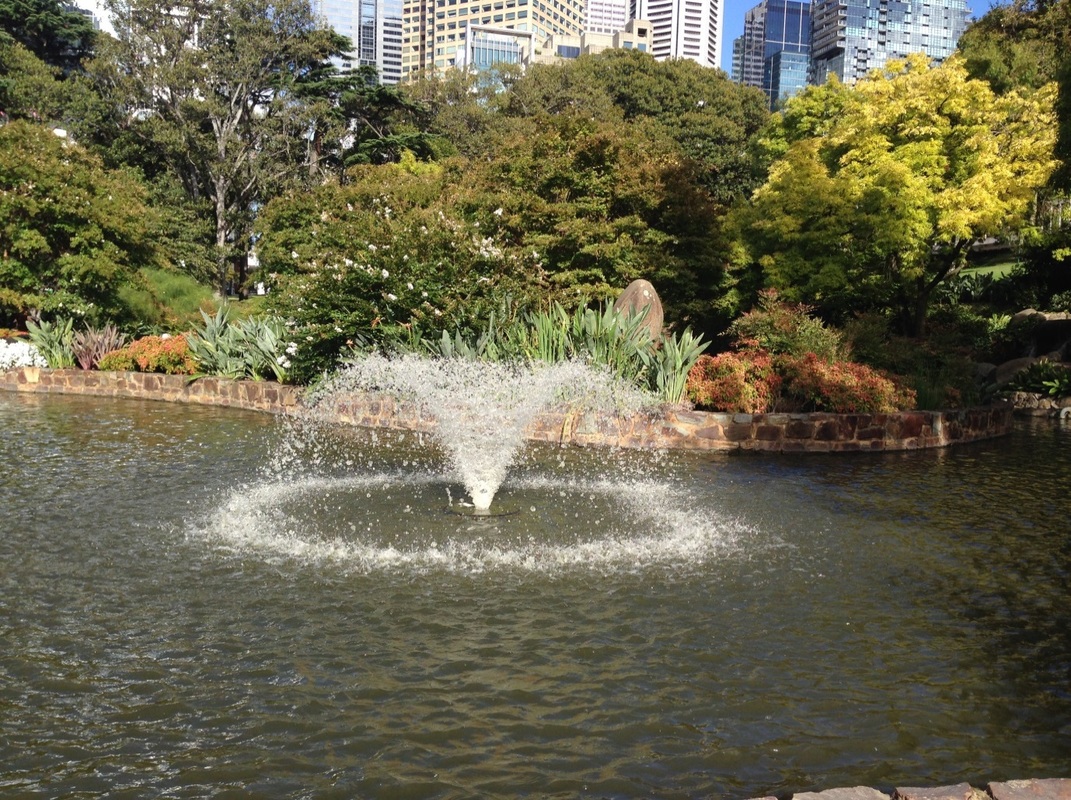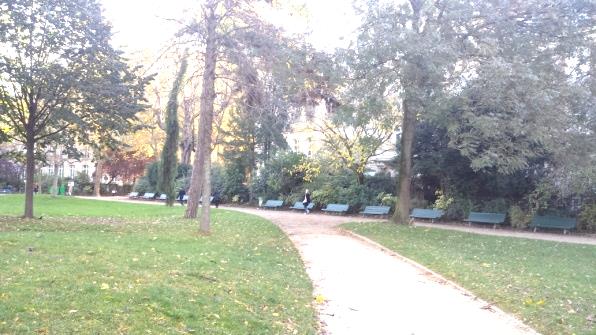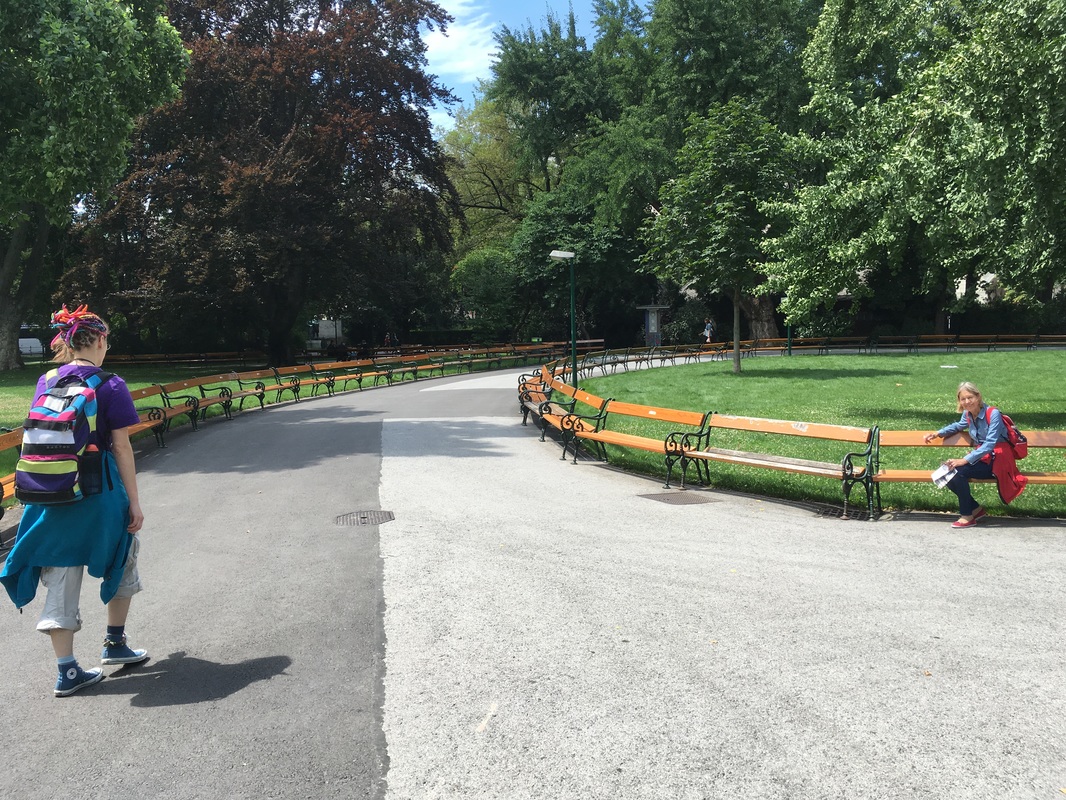A Vision for Caulfield Park
Background and Scope
Caulfield Park is widely recognised as the premier park in Glen Eira
In February 2015, the Friends of Caulfield Park (FCP) met with the Mayor of Glen Eira, Councillor Jim Magee and at his suggestion, agreed to prepare a document setting out the Friends’ vision for the western end of Caulfield Park in the context of the whole park.
This document addressed the areas bounded by Hawthorn Road and Balaclava Road east as far the Bowls Club and Hawthorn and Inkerman Road and the areas around the Cricket Pavilion and Caulfield Oval as far as the eastern end of the present Depot site including the Aviary Garden. As time elapses, this Vision will be updated to reflect changes that occur.
In February 2015, the Friends of Caulfield Park (FCP) met with the Mayor of Glen Eira, Councillor Jim Magee and at his suggestion, agreed to prepare a document setting out the Friends’ vision for the western end of Caulfield Park in the context of the whole park.
This document addressed the areas bounded by Hawthorn Road and Balaclava Road east as far the Bowls Club and Hawthorn and Inkerman Road and the areas around the Cricket Pavilion and Caulfield Oval as far as the eastern end of the present Depot site including the Aviary Garden. As time elapses, this Vision will be updated to reflect changes that occur.
Introduction
Under the heading “Six reasons to visit Caulfield", The Age of 15th March 2015 stated: ” Today you can find turtles swimming in the ornamental lake in what is now Caulfield Park and night herons roost in the elm trees. The western end of this park is dominated by sweeping lawns shaded by historic ornamental trees with stone memorials and a bandstand.”
In practice, this both overstates and understates the features and value of this part of the park. We hope this document will identify the important underlying values which have led to the Vision we propose, and that it will be a valuable input to future decisions about the park’s development.
It is generally acknowledged that whilst the eastern end of the park has received significant ongoing expenditure on development of public sporting facilities, the western end, where there are no lobby groups, has experienced general neglect.
To obtain a grass root appraisal of the values held by park users, FCP held a workshop to re-establish key values and opportunities. It is the outcome of this study that underpins the vision presented here.
In practice, this both overstates and understates the features and value of this part of the park. We hope this document will identify the important underlying values which have led to the Vision we propose, and that it will be a valuable input to future decisions about the park’s development.
It is generally acknowledged that whilst the eastern end of the park has received significant ongoing expenditure on development of public sporting facilities, the western end, where there are no lobby groups, has experienced general neglect.
To obtain a grass root appraisal of the values held by park users, FCP held a workshop to re-establish key values and opportunities. It is the outcome of this study that underpins the vision presented here.
Values
Tranquillity
This was the dominant value expressed using a variety of terms such as “a place of peace”, “a place of retreat from noisy and frantic world”, “retreat from urban chaos”, “sanctuary”, “peaceful oasis”
Role of the Park for the Community
From a community viewpoint Caulfield Park should be “the vibrant heart of the community”, “inspiring – people should be enriched by the experience of being there”. “Mentally refreshing”, “make people smile when entering” and “important for its heritage value”
The Long Term Role of Caulfield Park
The park should function as an active hub of community life. As such it must be adequately equipped with amenities that make this possible. The Workshop expressed this in terms such as: “Community participation in planning and implementation”, “a shelter from the elements”, “a shelter from bustle of 21st C.”. It should “be attractive to many and diverse types of people”, a “Community gathering space”, and “be used by many people enjoying quiet activities”
A long term role would see the community much more actively engaged in park management and planning, and a substantial reduction in situations where the council is confronting the community and ignoring the park users as has been the case in the past.
The Vegetation
Caulfield Park is, and should remain, outstanding because of its “beautiful trees”, “natural beauty”, “wide range of tree types and species” and requires “a much improved green and consistent ground cover”.
(We note that this western end of the park is a virtual arboretum and contains the most diverse selection of tree species (over 150) outside the Melbourne Botanical Gardens. This was recognised in part by Council who some years ago labelled thirty trees and prepared a tree walk brochure for interested park users.
However, at present, there are no adequate in-park dispensers for the brochures.)
Security
This was expressed in terms such as “Safety / A safer place”, “Easy access, to a park surrounded by roads”
This was the dominant value expressed using a variety of terms such as “a place of peace”, “a place of retreat from noisy and frantic world”, “retreat from urban chaos”, “sanctuary”, “peaceful oasis”
Role of the Park for the Community
From a community viewpoint Caulfield Park should be “the vibrant heart of the community”, “inspiring – people should be enriched by the experience of being there”. “Mentally refreshing”, “make people smile when entering” and “important for its heritage value”
The Long Term Role of Caulfield Park
The park should function as an active hub of community life. As such it must be adequately equipped with amenities that make this possible. The Workshop expressed this in terms such as: “Community participation in planning and implementation”, “a shelter from the elements”, “a shelter from bustle of 21st C.”. It should “be attractive to many and diverse types of people”, a “Community gathering space”, and “be used by many people enjoying quiet activities”
A long term role would see the community much more actively engaged in park management and planning, and a substantial reduction in situations where the council is confronting the community and ignoring the park users as has been the case in the past.
The Vegetation
Caulfield Park is, and should remain, outstanding because of its “beautiful trees”, “natural beauty”, “wide range of tree types and species” and requires “a much improved green and consistent ground cover”.
(We note that this western end of the park is a virtual arboretum and contains the most diverse selection of tree species (over 150) outside the Melbourne Botanical Gardens. This was recognised in part by Council who some years ago labelled thirty trees and prepared a tree walk brochure for interested park users.
However, at present, there are no adequate in-park dispensers for the brochures.)
Security
This was expressed in terms such as “Safety / A safer place”, “Easy access, to a park surrounded by roads”
The Vision

FCP believe that there are many opportunities to transform Caulfield Park into a much more rewarding area.
Sadly, neglect over many years has reduced the quality of this part of the park. This is clear by reference to parks in other nearby municipalities, and even within Glen Eira.
We believe that there are real opportunities to redress this. Some are listed below.
Grand and inviting entrances
The former Caulfield Council sponsored the sculptures and the brick paving at the Hawthorn Road and Balaclava Road corner which provides a notional entry to the park.
This dated and mouldy entrance could be much more inviting. It would also enhance the whole park to improve both this entrance and the one on the Hawthorn Road and Inkerman Road corner with its Heritage Park Light and Heritage Drinking Fountain.
Caulfield Park had excellent signage until about twenty years ago when it was abruptly removed without explanation. Large signs, proudly proclaiming “Caulfield Park” (like the one in Hopetoun Gardens) could be erected. They should be unlike the current scrappy ones which focus on restrictions.
Sadly, neglect over many years has reduced the quality of this part of the park. This is clear by reference to parks in other nearby municipalities, and even within Glen Eira.
We believe that there are real opportunities to redress this. Some are listed below.
Grand and inviting entrances
The former Caulfield Council sponsored the sculptures and the brick paving at the Hawthorn Road and Balaclava Road corner which provides a notional entry to the park.
This dated and mouldy entrance could be much more inviting. It would also enhance the whole park to improve both this entrance and the one on the Hawthorn Road and Inkerman Road corner with its Heritage Park Light and Heritage Drinking Fountain.
Caulfield Park had excellent signage until about twenty years ago when it was abruptly removed without explanation. Large signs, proudly proclaiming “Caulfield Park” (like the one in Hopetoun Gardens) could be erected. They should be unlike the current scrappy ones which focus on restrictions.
Vegetation and plants.
The management of this area is crucial and has several aspects:
The management of this area is crucial and has several aspects:
Tree variety
|
|
The photograph (right) shows the unkempt nature of many trees which have been allowed to become overgrown. This tree has a beautiful trunk which is almost completely hidden by superfluous growth. A future park would highlight these remarkable features. Failure to remove weeds (far right) - self-seeded privets allowed to grow to maturity near to Hawthorn Road. |
The Elm and Plane Tree avenues
The Elm and Plane Tree avenues should be carefully nurtured to ensure their long term survival in this era of global warming.
The Elm and Plane Tree avenues should be carefully nurtured to ensure their long term survival in this era of global warming.
Shelter and Community Centre.
We envisage a large spacious open-air roofed shelter suitable for shade on sunny days and for shelter from the weather when it is colder. It will be a structure with a high central pole surrounded by eight to ten laterals, linked with overarching bands, so that the roof over this framework could form a sort of parasol/umbrella. Perhaps down-pipes at the poles would remove most rainfall to the base.
The floor could be semi-formal with a cross grid of squares set into gravel. Perhaps a chessboard as shown could be one of the activity motifs of the structure. The illustration below shows the overall open structure, nestling into the trees, probably at, or near the sites of the former Conservatory or Amphitheatre.
We envisage a large spacious open-air roofed shelter suitable for shade on sunny days and for shelter from the weather when it is colder. It will be a structure with a high central pole surrounded by eight to ten laterals, linked with overarching bands, so that the roof over this framework could form a sort of parasol/umbrella. Perhaps down-pipes at the poles would remove most rainfall to the base.
The floor could be semi-formal with a cross grid of squares set into gravel. Perhaps a chessboard as shown could be one of the activity motifs of the structure. The illustration below shows the overall open structure, nestling into the trees, probably at, or near the sites of the former Conservatory or Amphitheatre.
One of the benefits of the previous Conservatory was shelter in a variety of situations.
FCP envisages the structure being divided into three open areas separated by curving barriers that echo the roof line, set at 120 degrees to each other. One would point south whilst the other two would point to the north-east and north-west. This would assure users of shelter from wind or driving rain. (not shown in illustration)
Some of its primary characteristics are:
It will have plants, perhaps creepers softening the edges and growing up the support poles. Since there are barbecues that adjoin the nearby play area, it is not envisaged that there will be any such facility as a part of this new focal point. That is not the purpose. In ideal conditions the shelter would deliver three discreet, yet open areas for community use.
FCP envisages the structure being divided into three open areas separated by curving barriers that echo the roof line, set at 120 degrees to each other. One would point south whilst the other two would point to the north-east and north-west. This would assure users of shelter from wind or driving rain. (not shown in illustration)
Some of its primary characteristics are:
- A covered structure to suit the heritage area.
- An active-passive area where people come together to socialise informally.
- It contains benches, seats and tables (chessboard inlay) to encourage informal rendezvous.
- Possibly garden beds with large shrubs, some of the ferns etc. around the edges.
It will have plants, perhaps creepers softening the edges and growing up the support poles. Since there are barbecues that adjoin the nearby play area, it is not envisaged that there will be any such facility as a part of this new focal point. That is not the purpose. In ideal conditions the shelter would deliver three discreet, yet open areas for community use.
Beautiful and enhanced water feature.
The lake has the potential to be a stunning feature. The FCP vision recognises this. This feature attracts many visitors and the wild life is important. Suitable plantings would attract many native birds, but the water quality needs constant attention (right below). It was renovated at the end of 2015.
The lake has the potential to be a stunning feature. The FCP vision recognises this. This feature attracts many visitors and the wild life is important. Suitable plantings would attract many native birds, but the water quality needs constant attention (right below). It was renovated at the end of 2015.
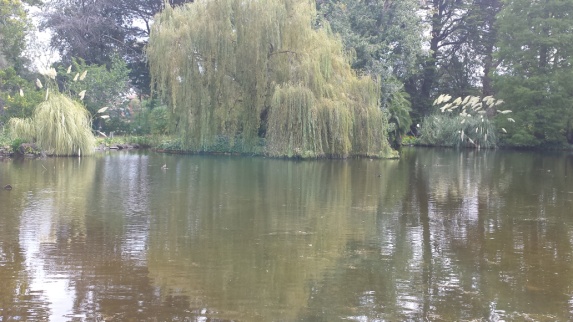
The lake could be of a quality similar to the Rippon Lea lake water (see left) but much requires to be done to achieve this.
The recently reinstalled water fountain contributes greatly and could become a popular feature (like the simple fountain pictured below in Treasury Gardens which also shows how attractive it can be to have shrubs and colourful planting down to the water’s edge).
The recently reinstalled water fountain contributes greatly and could become a popular feature (like the simple fountain pictured below in Treasury Gardens which also shows how attractive it can be to have shrubs and colourful planting down to the water’s edge).
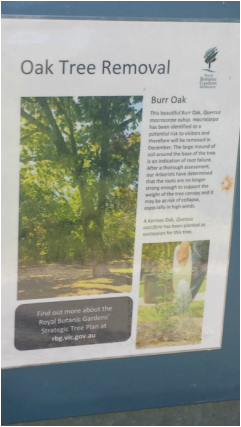
Information
Information about the park should be readily available, perhaps in the form of a small brochure. This would be in addition to the Tree-walk Brochure and arrangements should be made so that it is accessible. The Tree-walk Brochure was formerly available from a dispenser attached to the side of the Conservatory but now different arrangements, preferably at the entrances to the western end of the park are necessary.
Other types of information include in-park entertainment which is difficult to distribute (so an in-park activity notice board would be exceedingly useful).
Similarly any information about any tree maintenance should be provided. The attached photo is taken from the Botanic Gardens and illustrates what can be achieved in this regard. The attached photograph is one taken from the Botanic Gardens and illustrates what can be achieved in this regard
Information about the park should be readily available, perhaps in the form of a small brochure. This would be in addition to the Tree-walk Brochure and arrangements should be made so that it is accessible. The Tree-walk Brochure was formerly available from a dispenser attached to the side of the Conservatory but now different arrangements, preferably at the entrances to the western end of the park are necessary.
Other types of information include in-park entertainment which is difficult to distribute (so an in-park activity notice board would be exceedingly useful).
Similarly any information about any tree maintenance should be provided. The attached photo is taken from the Botanic Gardens and illustrates what can be achieved in this regard. The attached photograph is one taken from the Botanic Gardens and illustrates what can be achieved in this regard
Some Other Opportunities
Music.
A park is a natural venue for music. A park, which has a heritage bandstand, should make use of it. Over five years FCP has promoted a series of band stand concerts. We believe that this is a natural role for Council. The concerts have been popular and could become a recognised regular feature.
Engagement.
Communicate with community on park management to incorporate ideas before implementation. Failure to do so communicates contempt for the ratepayers and users of Caulfield Park and the rest of the community generally.
Walks.
More walks following further tree labeling could be developed.
Seating and rest-places.
If the park is to include passive recreational facilities it requires much more seating. European parks, like the ones shown below, recognise that people sit to eat lunch, read the paper, sit with children, sit and chat, observe, or merely relax.
Music.
A park is a natural venue for music. A park, which has a heritage bandstand, should make use of it. Over five years FCP has promoted a series of band stand concerts. We believe that this is a natural role for Council. The concerts have been popular and could become a recognised regular feature.
Engagement.
Communicate with community on park management to incorporate ideas before implementation. Failure to do so communicates contempt for the ratepayers and users of Caulfield Park and the rest of the community generally.
Walks.
More walks following further tree labeling could be developed.
Seating and rest-places.
If the park is to include passive recreational facilities it requires much more seating. European parks, like the ones shown below, recognise that people sit to eat lunch, read the paper, sit with children, sit and chat, observe, or merely relax.
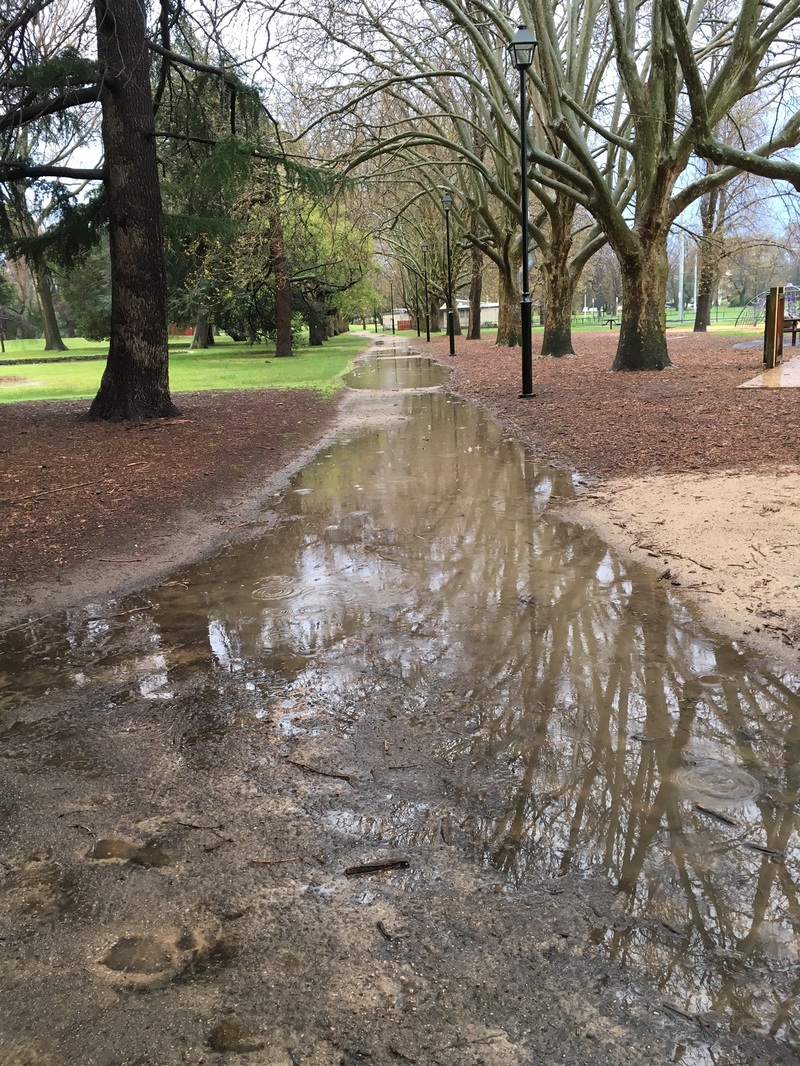
Cricket Pavilion.
Integrate the Cricket Pavilion onto the western edge by painting it in Glen Eira colours to complement the adjacent Band Stand.
Properly Maintained Paths.
Properly maintained paths would be much easier if cyclists did not ride on the walking tracks. This not uncommon practise is dangerous to walkers and particularly damaging to the track surface when it has been raining.
Games.
Informal games such as a chess board could provide in-park activity.
Bins with covers
Integrate the Cricket Pavilion onto the western edge by painting it in Glen Eira colours to complement the adjacent Band Stand.
Properly Maintained Paths.
Properly maintained paths would be much easier if cyclists did not ride on the walking tracks. This not uncommon practise is dangerous to walkers and particularly damaging to the track surface when it has been raining.
Games.
Informal games such as a chess board could provide in-park activity.
Bins with covers
Not part of the Vision and Undesired
There are several aspects of the Vision that the Study strongly opposed. These include
No dominant groups
No formation of de-facto new tracks across remaining lawns by Council vehicles.
An example is the three year old de-facto track from the Cricket Pavilion Car Park to the Band Stand.
A corollary to this is to restrict Council vehicles roaming, seemingly at will, all over the lawns.
No badly behaved or unleashed dogs.
At present it is common to see dogs running freely about the western end, unchecked by their owners.
No bikes.
Bicyclists too are often seen riding through this part of the park or even across the grass; sometimes accompanied by a dog getting its exercise.
No ball games.
They belong in the eastern end of the park.
No unmanaged geese
The geese are a controversial part of the lake life. They are sometimes very aggressive; their copious droppings make an awful mess, and this fouls the water and the surrounding parkland abutting the lake. On the other hand bird life is an undoubted attraction, especially to children, and many park users like to feed them.
Ducks are less impactful and are more tolerant and consideration should be given to replacing the geese in the medium term.
No Depot
See separate Vision in Appendix attached
No further playgrounds.
The three in this area should suffice.
No ugly / inharmonious / modern buildings inside the precinct
No more concrete paths
No commercial operations
No personal trainers.
These are already present in this area and should be redirected elsewhere.
No sporting activity
Next Steps
The friends of Caulfield Park were pleased to respond to the mayor's invitation and to have had the opportunity to make this submission. We look forward to discussing it with the Council.
A revised Caulfield Park Master Plan should be available in the first half of 2018
There are several aspects of the Vision that the Study strongly opposed. These include
No dominant groups
No formation of de-facto new tracks across remaining lawns by Council vehicles.
An example is the three year old de-facto track from the Cricket Pavilion Car Park to the Band Stand.
A corollary to this is to restrict Council vehicles roaming, seemingly at will, all over the lawns.
No badly behaved or unleashed dogs.
At present it is common to see dogs running freely about the western end, unchecked by their owners.
No bikes.
Bicyclists too are often seen riding through this part of the park or even across the grass; sometimes accompanied by a dog getting its exercise.
No ball games.
They belong in the eastern end of the park.
No unmanaged geese
The geese are a controversial part of the lake life. They are sometimes very aggressive; their copious droppings make an awful mess, and this fouls the water and the surrounding parkland abutting the lake. On the other hand bird life is an undoubted attraction, especially to children, and many park users like to feed them.
Ducks are less impactful and are more tolerant and consideration should be given to replacing the geese in the medium term.
No Depot
See separate Vision in Appendix attached
No further playgrounds.
The three in this area should suffice.
No ugly / inharmonious / modern buildings inside the precinct
No more concrete paths
No commercial operations
No personal trainers.
These are already present in this area and should be redirected elsewhere.
No sporting activity
Next Steps
The friends of Caulfield Park were pleased to respond to the mayor's invitation and to have had the opportunity to make this submission. We look forward to discussing it with the Council.
A revised Caulfield Park Master Plan should be available in the first half of 2018
